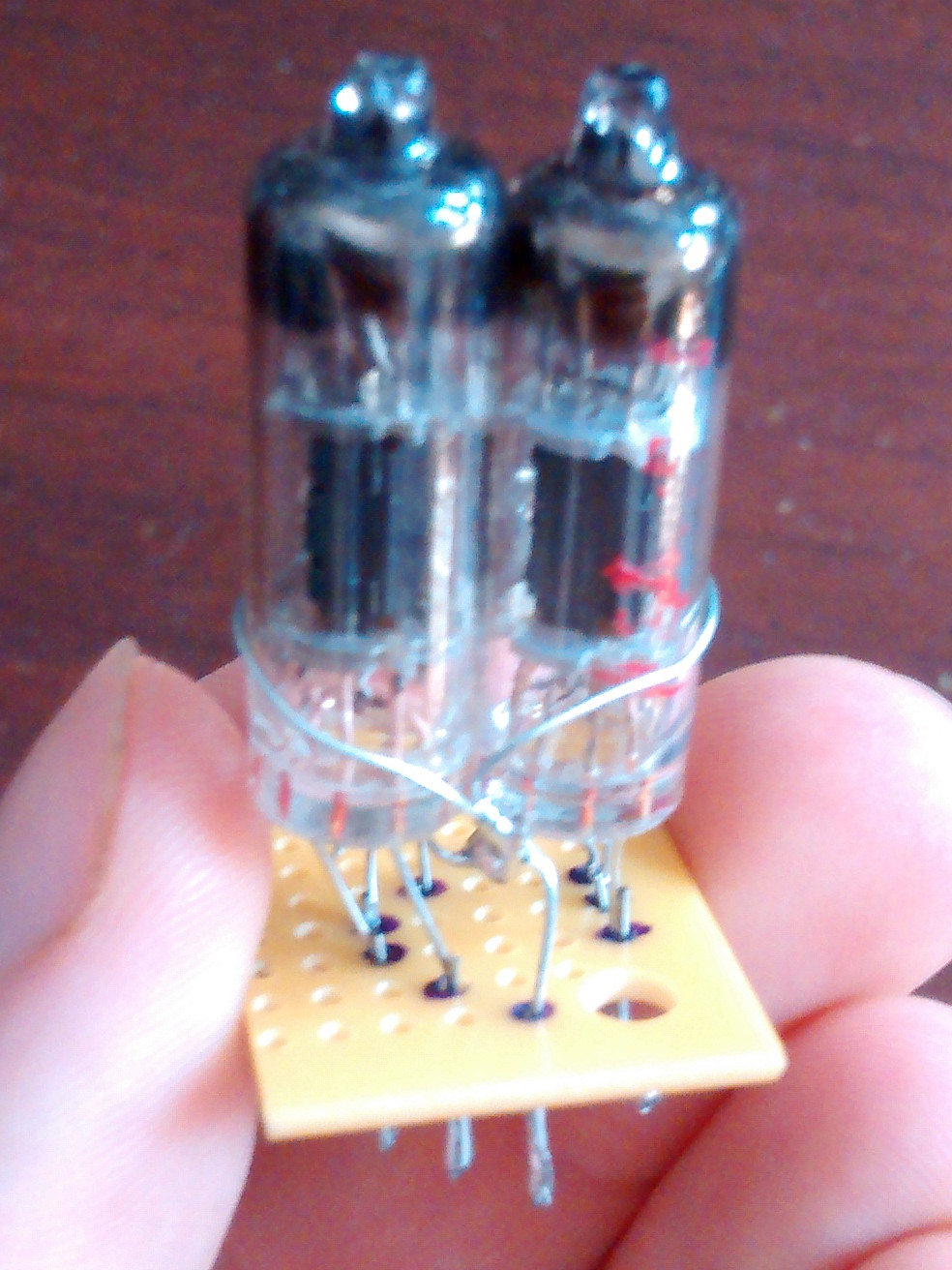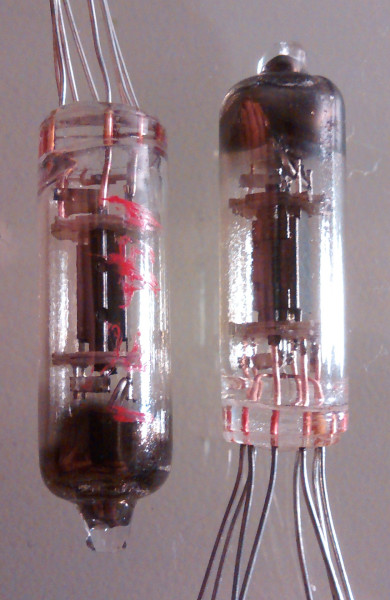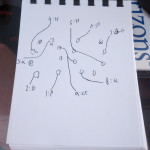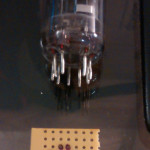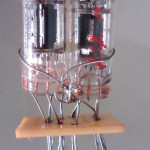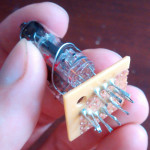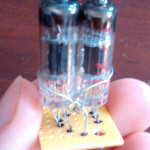Making a 12AX7 substitute from two subminiature 6247 triodes
I have a handful of these 6247WA subminiature triode tubes that I bought way back when I was getting interested in tube electronics. They were very cheap, and thus good for experimenting with when I didn’t have a clue what I was doing. Now that I’ve graduated to more common and more expensive tubes, I’m not sure what to do with them.
The datasheet for the 6247WA tube shows that it isn’t drastically different from the more common preamp tubes found in guitar amps, such as the 12AX7 and 12AT7. It is most similar to the 12AT7, if we’re being picky. I figured it wouldn’t be too hard to wire two of these subminiature triodes on to a base, and make a pin-compatible substitute for its bigger brothers.
First I had to figure out how to wire them together. Each 6247 has eight leads coming from its base. Some of these connections are redundant, or not connected to anything. I cut off the extra leads to decrease complexity. Then I mapped the best way to orient the tubes so that it wouldn’t be difficult to wire the leads on to a noval base. I did use one of the not-connected leads to form a sort of wire-lasso around the tube bodies so they wouldn’t come apart from each other. I also had to wire the filament connections together with a center tap, so the new dual-triode filament could be powered from 12 or 6 volts like the 12AX7.
Once I figured out how the connections would be layed out, I cut a small square of perfboard roughly the size of a 12AX7 base. I marked the solder pads that would fasten the new dual-triode’s pins, making sure to mark pads closest to the circular layout of a noval tube base. I pulled the leads from the two single triodes through the board, making sure that the correct leads were in the correct places to be compatible with a 12AX7. To make the pins themselves, I cut the leads to twice the length of a 12AX7 pin, then folded them in half so the end of each lead would be as close as possible to the solder pad it came through. I flowed a small amount of solder across the length of each exposed lead, making sure to fasten it to the solder pad. Finally I covered the solder pads with some glue to form an insulated barrier between them, as they are a little too close together to make me comfortable operating them at high voltage without insulation.
With the pins finished and trimmed, the new dual-triode was complete. It’s not the prettiest thing in the world, but it does fit in to a noval socket easily (well, as easily as any tube does) and work in circuits designed for a 12AX7 or similar tube. How does it sound? Well, in my opinion the 6247 isn’t a particularly ‘great’ sounding tube if you intend to overdrive it. If you don’t intend to overdrive it, the sound is just fine and is pretty much indistinguishable from a 12AT7.
